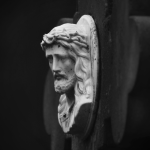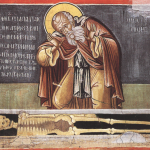“THE TRAGIC SIDEKICK: SHAKESPEARE AND THE SUBVERSION OF THE HEROIC IDEAL”: This is my senior essay from high school. It was really, really important to me at the time; if you knew me as a college freshman (especially if you’re the Old Oligarch), you might recognize some of the arguments, preferences, and catchphrases. It’s wild to compare this piece to my Crisis magazine article on Christianity and children’s fantasy: The implied worldviews are almost opposite. I think a lot of my fiction (and a lot of my life!) is a negotiation between this essay and the Crisis piece.
The essay goes on for the next few posts, with the last one titled (helpfully) “End.” I fixed a spelling error but did not clean up the grammar or prune all those d–n semicolons.
I also want you all to know that I now strongly disagree with the paragraph on death in Hamlet (although I’ll still stand behind the comments on Fortinbras). Anyway, other people have probably said all of this better, but I haven’t read those pieces, so maybe you haven’t either. Enjoy….
—————————————————————————————-
If the typical tragedy or history play were a solar system, the hero-king would be its sun, and all the other characters satellites. A carping, anti-heroic figure on the margins of the action might add some irregularity to their orbits, but there would never be any question of where the center of gravity lay. Shakespeare, however, took the standard versions of the marginal figure left over from morality plays, and gave them so many new attributes that he profoundly shifted the weight of his plays. By giving these malcontents and Vice-figures intelligence, a sense of honor by their own un-heroic lights, and dramatic importance, he created a new type of marginal character, represented by Mercutio in Romeo and Juliet, Falstaff in the Henry IV and Henry V plays, and the Fool in King Lear. This character is distinguished by his great vigor and lust for life, tempered by recognition of life’s underside of fear and decline; cynicism about power, glory, “the good death,” and the other abstract ideals of the heroes; a way with words which moves beyond the malcontent’s insults into verbal acrobatics; and devotion to the hero even though his view of the world is the opposite of the hero’s. This new marginal figure is still the ironic commenter who sees through the parades of nobility that the hero presents, but Shakespeare develops him into a fully-fleshed character with a personality as bold and multifaceted as the hero’s, if not in some cases more so. Shakespeare gave the sidekick the freedom to be complicated, and often to speak the truths that the hero ignores. This shift of weight destabilizes the plays, knocks them free of their form, and allows the playwright to comment on that form through the sidekick’s words far more powerfully than he could have through the earlier malcontent and Vice archetypes. The development of a marginal voice which rivaled the hero’s gave the best of Shakespeare’s work the mercurial quality which distinguishes it from more ordinary drama. Yet the hero remained the sun, and the deaths of the marginal characters served only to support his story, until Shakespeare took the final step in the development of his new archetype and placed one of them at the center of a play, completely breaking free of the constraints of his form. In Hamlet, a character who is a variation on earlier Shakespearean marginal figures is forced into the hero’s role, and the tragic sidekick must try to carry the burden of the tragic hero.
Shakespeare used a few versions of the simpler malcontent character throughout his career. The bilious murderers in Macbeth are the most one-dimensional representatives of this type, and the griping, syphilitic Thersites of Troilus and Cressida fits the case even better. Lear’s Fool is an expansion of this type, the mocker on the sidelines who points out the follies of the powerful. The kinship of the morality-play figure of Vice to the Shakespearean tragic sidekick can be seen most clearly in Falstaff, whose outward appearance is an exact copy of the old, corpulent misleader of youth familiar from plays such as The Castell of Perseverance (c. 1425) and Nature of the Four Elements (1519). He seems to be nothing more than “Sensual Appetyte,” a lecher, glutton, and coward. In Henry IV, part 1 Poins places him squarely in this tradition–“Jack! how agrees the devil and thee about the soul, that thou soldest him on Good Friday last, for a cup of Madeira and a cold capon’s leg?” (I.ii.111-3) Mercutio, though he derives more from the malcontent than from the Vice-figure, can also be seen in this light, as Romeo moves from bawdy punning with him to a more chaste love for Juliet.
Shakespeare’s plays work counter to the morality plays in their presentation of these characters, however, whether he draws from the archetype of the malcontent or that of Vice. His marginal characters still have the flaws which distinguished their predecessors–the Fool’s mockery, Mercutio’s low humor and reckless temper, Falstaff’s boasting and dissolution–but Shakespeare does not present these faults as the entirety of their personalities. He does not even present the flaws as wrong most of the time, since they serve his purpose of giving an alternate, un-heroic view of the world. The Fool’s songs and riddles, which spring from the malcontent tradition, are in fact the voice of truth in a story dominated by the madness of Lear and his daughters; Mercutio’s hot temper and sexual puns are part of his vitality and passionate living; Falstaff’s drinking, gluttony, lust, and cowardice in battle all arise from his desire to satisfy his body and defy his approaching death. As he puts it, he may steal, but that is his vocation, and “’tis no sin for a man to labor in his vocation” (1H4, I.ii.101).











